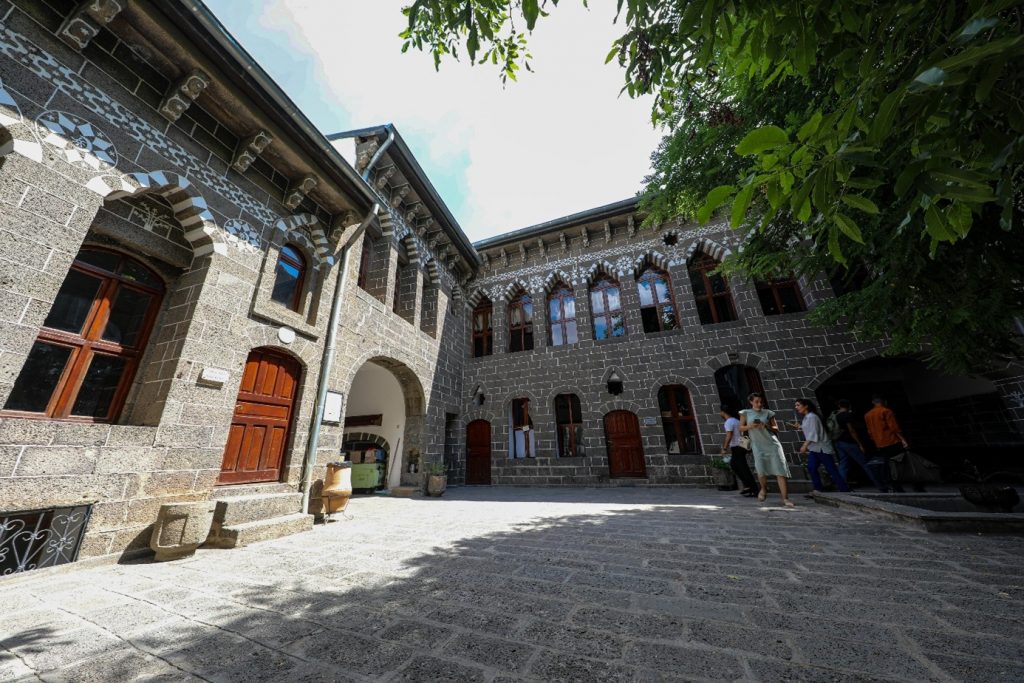Diyarbakır History
Situated in the central part of the Southeastern Anatolia Region, Diyarbakır has historically been of geopolitical importance. Since ancient times, it has connected the Mediterranean to the Persian Gulf and the Black Sea to Mesopotamia. Its position as a natural passage has always increased its appeal, making it a city marked by many civilizations. It is a city where countless cultures from the depths of history have converged. Throughout history, the city, named Amida, Amidi, Amid, Kara-Amid, Diyar-Bekr, Diyarbekir, and Diyarbakır, is located in the heart of the Fertile Crescent in the area known as El-Jazeera.
Diyarbakır’s deep-rooted history extends back 12,000 years. Recent archaeological excavations in the Bismil district of the city revealed that settled life began around 10,400-9250 BC in “KörtikTepe”. The Çayönü Hill near Ergani, representing one of Anatolia’s oldest agricultural village communities, sheds light not only on the regional history but also on world civilization history, dating back 10,000 years. Evidence has also emerged of life in the caves around Diyarbakır during the Paleolithic and Mesolithic eras. Remnants from this era have been discovered in the Hassuni Caves near Silvan and the Hilar Caves near Ergani.
In the 3000s BC, traces in the city center indicate the Hurrians began efforts to make Diyarbakır their homeland. Subsequently, many civilizations such as the Mitanni, Abbasids, Marwanids, Great Seljuks, Inaloğulları, Nisanoğulları, Artuqids, Ayyubids, Anatolian Seljuks, Akkoyunlu, and Ottomans established themselves here. Diyarbakır carries a rare cultural and historical heritage, characterized by the spatial and architectural features of these civilizations.
The UNESCO World Heritage Site, the Diyarbakır Walls, top the list of the city’s countless monuments. With an aerial view resembling a shielded fish, the walls encircle the city and consist of the Inner and Outer Castle. The Diyarbakır Walls rank first in terms of age and height among the world’s fortifications. The nearly entirely preserved Diyarbakır Castle, bearing traces of many civilizations, has defied time, standing for almost five thousand years. With a thickness of 3-5 meters and a height of 11-12 meters, it boasts an impressive stature. The 5,500-meter-long Diyarbakır Walls are adorned with 82 bastions, wrapping around the city like a necklace. They retain traces from both before and after the Common Era, preserved in 63 distinct inscriptions and countless figures, effectively serving as a museum of writings and reliefs.
Diyarbakır Walls
Diyarbakır Castle consists of two sections: the Inner Castle (İçkale) and the Outer Castle (Dış Kale). It is believed that the İçkale section formed the nucleus as the initial settlement area. Different sources offer varying dates regarding the construction of the Diyarbakır walls, but it is generally recorded to have been built in the middle of the 4th century.
Together with the Inner Castle, the total length of the wall is approximately 5,800 meters. Including the Inner Castle, the approximate length of the walls is 5.5 km. There are 82 bastions on the outer walls and 19 bastions on the Inner Castle. The Diyarbakır Walls are the longest surviving city walls in the world and the second-longest fortress walls after the Great Wall of China. In 2015, the Diyarbakır Walls were declared a World Heritage Site by UNESCO.
Gates and Bastions of the Walls
The Diyarbakır Walls have four main gates. The walls open to the north through the Mountain Gate (Dağ Kapı or Harput Kapı), to the west through the Urfa Gate (Rum or Aleppo Gate), to the south through the Mardin Gate, and to the east through the New Gate (Su, Satt, or Tigris Gate). Until the beginning of the 20th century, it’s known that the gates of the walls were closed at night to control entrance and exit to the city.
Located in the northeast of the walls and also having four gates, the Inner Castle (İçkale) opens to the inside of the walls through the Palace Gate (Saray Kapı) and Küpeli Gate, and to the outside through the Oğrun Gate and the Conquest Gate (Fetih Kapı).
• Mountain Gate (Dağ Kapı)
Also known as Harput Gate, it’s located between two bastions built during the Roman period. It features inscriptions in Latin and Greek, as well as from the Abbasid and Marwanid periods.
• Urfa Gate
Also known as the Rum Gate, according to its inscription, it was repaired during the Artuqid era by Sultan Mehmet, with human and animal figures added. It was used as the royal gate during the Ottoman era.
• Mardin Gate
Also known as the Wire Gate (Tel Kapı), its inscription states it was repaired in 909-910 AD with the help of Caliph Muktedir Billah, his vizier Ali bin Muhameddin, and the Amidli engineer Ahmed.
• Conquest Gate (Fetih Kapı)
Research on the Conquest Gate revealed it was constructed in 1198 during the reign of Kutbüddin II. Sökmen. It’s believed that Islamic armies entered the city through this gate after conquering Diyarbakır.
• Küpeli Gate
Built by Divane Hüsrev Pasha with the purpose of expanding the Inner Castle, alongside the Palace Gate.
There are 82 bastions on the outer walls and 19 on the Inner Castle. Research has found that 3 of the 82 bastions were demolished in the early 1930s, and 4 bastions crumbled over time. Four bastions, which appear as half bastions from the outside, only have their ground floors remaining since the upper levels have been destroyed. Designed for defense, the bastions usually have three or four floors. The ground floors served as storage, while the first and upper floors housed soldiers.
• Goat Bastion (Keçi Burcu)
The oldest bastion on the walls. Although its exact construction date is unknown, it underwent repairs during the Marwanid period. It was built on a carved rock to the east of the Mardin Gate.
• Grand Bastion (Ulu Beden Burcu or Evli Beden Burcu)
Built by the Artuqid ruler Melik Salih, its final form was given in 1208 by Bercis’ son, İbrahim Bey. This bastion, which has its own inscription, is adorned with reliefs of a double-headed eagle and lion.
• Seven Brothers Bastion (Yedi Kardeşler Burcu)
Built at the same time and by the same architect as the Grand Bastion. Like the Grand Bastion, it is also decorated with motifs of double-headed eagles and lions.

Inner Castle (İçkale)
Over the millennia, 33 civilizations, from the Assyrians to the Persians, Romans to the Islamic Republic, Umayyads to Seljuks, Artuqids, Ayyubids, and Ottomans, have left their mark on Diyarbakır’s history. Throughout the eras of all these diverse cultures and states, the Inner Castle has been used as the city’s administrative center and has preserved its existence as the world’s oldest administrative center. Sultan Süleyman the Magnificent expanded the Inner Castle by adding 16 towers and two new gates, bringing it to its final form..
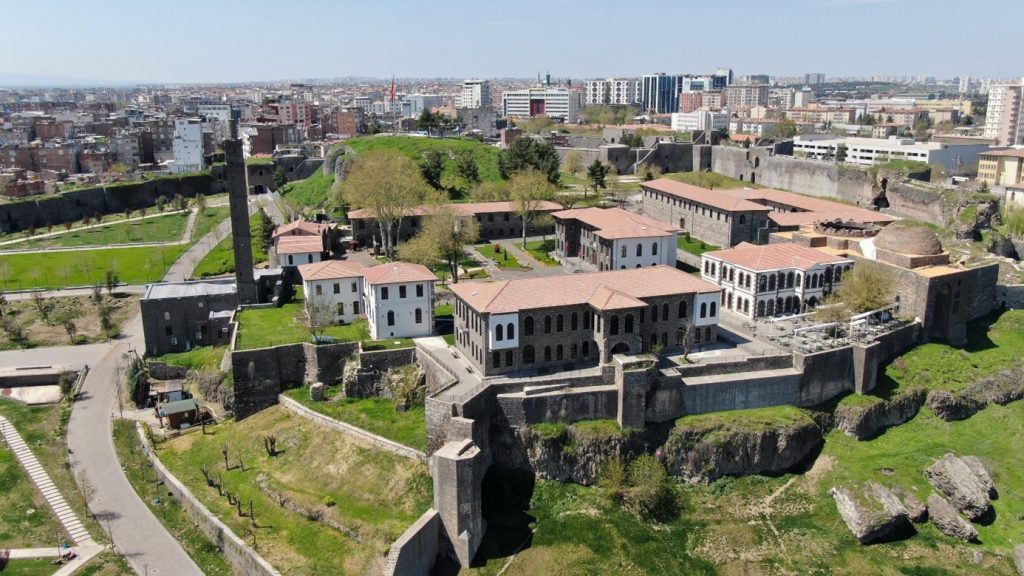
Diyarbakır Grand Mosque (Ulu Camii)
The Grand Mosque was converted from a church into a mosque in 639 AD during the reign of Caliph Umar following the conquest of the city. It was opened for worship as the first mosque in Anatolia. Being the first mosque in Anatolia and considered a reflection of the famous Umayyad Mosque in Damascus, the Diyarbakır Grand Mosque is recognized as the 5th Holy Sanctuary in the Islamic world. In its courtyard is a sundial created by El-Cezeri, a pioneer in cybernetics and robotics, who conducted scientific research in Diyarbakır for 25 years.

The Ten-Eyed Bridge
Also known as the Tigris Bridge, the Ten-Eyed Bridge unites the two banks of the Tigris with blocks constructed on ten disjoint arches. On the southern façade, between the arches and the railing, is a two-line floral Kufic inscription, indicating that it was commissioned in 1064-65 by Qadi Abu’l-Hasan Abdulwahid during the time of Nizam al-Dawla Nasr of the Marwanids and constructed by a architect named Ubeyd. However, researchers agree that this inscription is a renovation inscription and believe that the structure was built at a much earlier date.

Eğil Canyon
Eğil Canyon is a confluence of culture, faith, and natural beauty, featuring the tombs of 9 Prophets, an ancient fortress, and a reservoir lake. It is a stunning natural site near the center of Diyarbakır, suitable for day trips.
In the canyon filled by the Tigris reservoir, boat tours are organized. During this short tour, it’s possible to witness a lush green vegetation and oak forests on the slopes of the canyon. The steep cliffs of the canyon offer climbing and hiking opportunities for those engaged in mountaineering. The reservoir lake is also a haven for those interested in water sports. This area is suitable for swimming, all kinds of water sports, and organizing competitions..
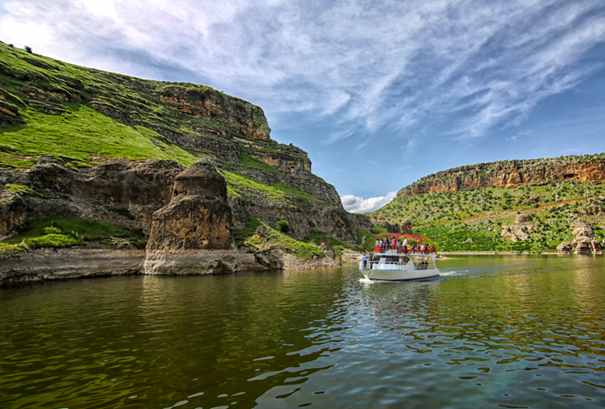
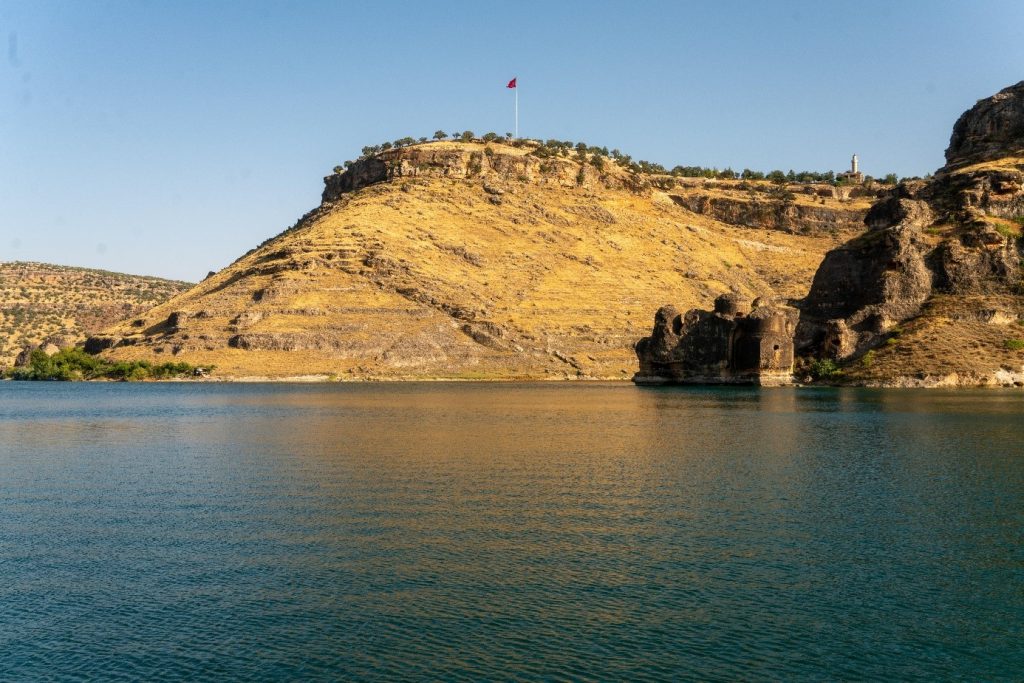
Hevsel Gardens
Carrying the traces of more than 33 civilizations, agriculture has been practiced uninterruptedly for 8,000 years in Diyarbakır’s Hevsel Gardens. Beyond its agricultural significance, it holds a special place in terms of culture and history.
Hevsel Gardens is home to hundreds of butterfly species and unique habitats. The valley, used by migratory birds as a station for resting, sheltering, and protection, hosts regional birds known as the grey wagtails and rosy starlings. In addition, throughout almost every season, one can encounter birds of prey such as the wild hawk, red kite, honey buzzard, short-toed snake eagle, European bee-eater, little owl, common kestrel, and lesser kestrel. It’s also known to house the lesser spotted eagles, which are rare in Turkey. The climate created by the Hevsel Gardens is a crucial factor for the continuous life in Diyarbakır that has persisted for thousands of years. In 2015, the Hevsel Gardens were declared a World Heritage Site by UNESCO..

Prophet Solomon Mosque and Tombs of the Companions
The Prophet Solomon Mosque was commissioned by Nisanoğlu Ebul Kasım between 1155 and 1160. Referred to by three distinct names – Nasiriyye Mosque, Prophet Solomon Mosque, and Fortress Mosque – it is located in the Inner Fortress (İçkale) of Diyarbakır. Next to the mosque are the tombs of 27 companions, including the son of Khalid bin Walid, Prophet Solomon, who was martyred during the conquest of Diyarbakır in 639. It is among the most frequently visited sites by both locals of Diyarbakır and tourists..
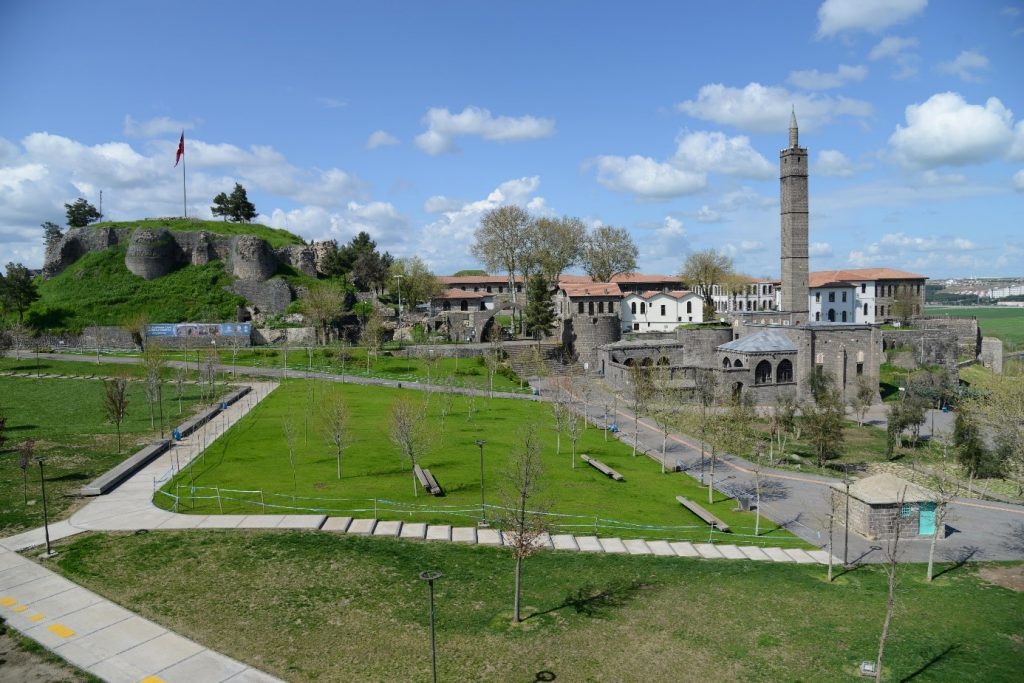
Eğil Prophet’s Hill
Eğil is an ancient city that has hosted numerous civilizations throughout history. With historic routes such as the Eğil castle dating back to the Assyrian era, Deran caves, and royal tombs, Eğil combines ancient and historical wonders with natural beauty. In Eğil, there are also the tombs of 8 prophets, including Prophet Zülkifl and Prophet Elyesa, whose names are mentioned in the Qur’an.
Prophets Whose Tombs are Located Here:
Prophet Elyesa
Prophet Zülkifl
Prophet Harun-ı Asefi
Tomb of Prophet Zünnun (Jonah)
Prophet Ömer
Prophet Hallak
Prophet Harut
Prophet Hürmüz

Zerzevan Castle and Mithras Temple
Zerzevan Castle stands out among the historical and cultural riches of Diyarbakır province. This historic fortress is located to the northeast of the Diyarbakır city center and boasts a profound history that stretches back to the 4th century BC. During the Roman Empire, the castle was fortified with walls, watchtowers, and other defensive structures. However, Zerzevan Castle is not merely a defensive structure; it also serves as an indicator of the power and influence of the ancient Roman Empire in this region.
Throughout its history, the castle has been influenced by various civilizations and has been utilized in different periods. Hence, it’s regarded as a particularly intriguing site for history enthusiasts. The remnants within the castle provide visitors with a chance to trace the footprints of ancient life.
Additionally, sky events are organized around Zerzevan Castle annually in the months of May and June. These activities typically offer star gazing, astrophotography, and are wonderful opportunities for those interested in astronomy. Thanks to the minimal light pollution in the area, it provides an ideal location to observe the magnificent views of the night sky. Organized alongside astronomy clubs and expert guides, these events are a splendid choice for those looking to gain more knowledge about the sky and experience an unforgettable adventure among the stars.
Zerzevan Castle isn’t just an architecturally significant structure; it also presents a unique venue for sky events. By visiting this region, one can embark on a journey through history and explore the mesmerizing beauty of the sky..
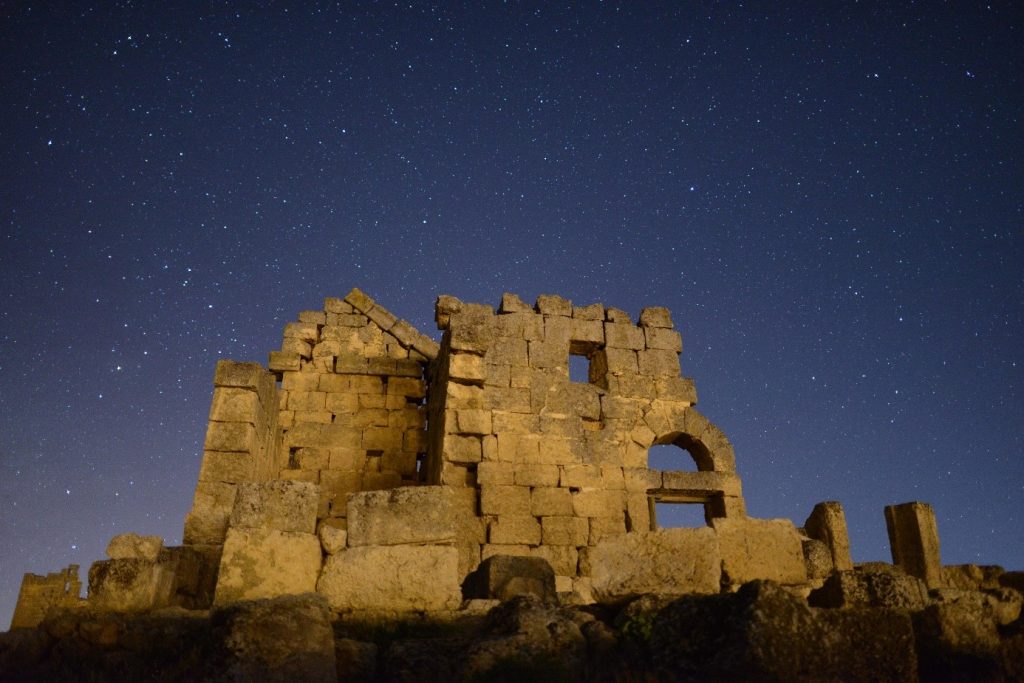
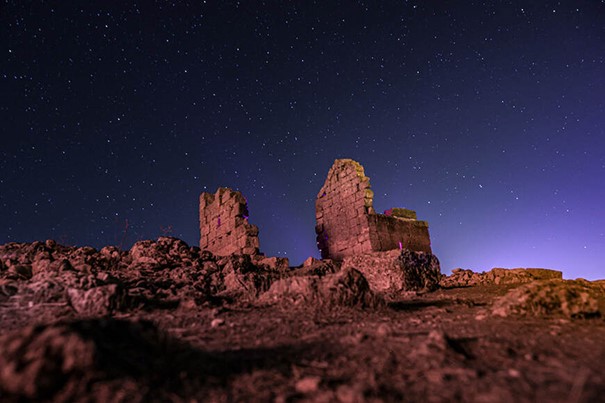
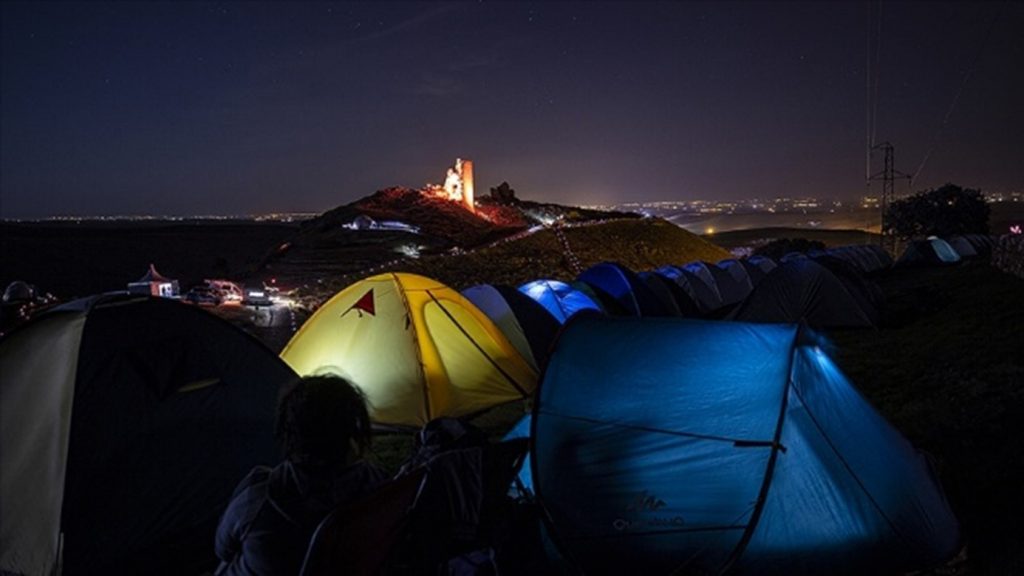
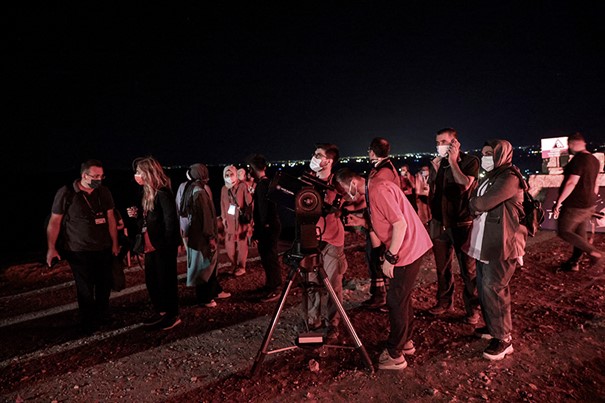
Surp Giragos Armenian Church
It is a church used by the Orthodox Armenians. As one of the significant works of Armenian architectural history, the Surp Giragos Church is the largest Armenian church in the Middle East. In research, the first mention of the church was found in the travel notes of the Polish Simeon, dated between 1610 and 1615.
Surp Sarkis Armenian Orthodox Church
The earliest information about the church is found in Gugas İnciciyan’s geography book. The book mentions, “After the Surp Teotoros Mother Church was converted into a mosque in 1515 or 1518, this church was constructed in its graveyard.” It is also referred to as Mor Dumyana or Hızır İlyas Church. During the Republican period, it was used for a while as a rice factory, hence it’s sometimes referred to as the Rice Church. The church, which also houses a school, is constructed with an upper gallery for women and a ground floor entrance.
Meryem Ana Syriac Ancient Church
Originally serving as a temple, the structure was converted into a church in AD 280. Built over different periods, the church, with its additional structures, forms a complex architectural group. The presence of a piece of the cross on which Jesus Christ was crucified in Jerusalem within this church bestows a unique significance to it in the Christian world..
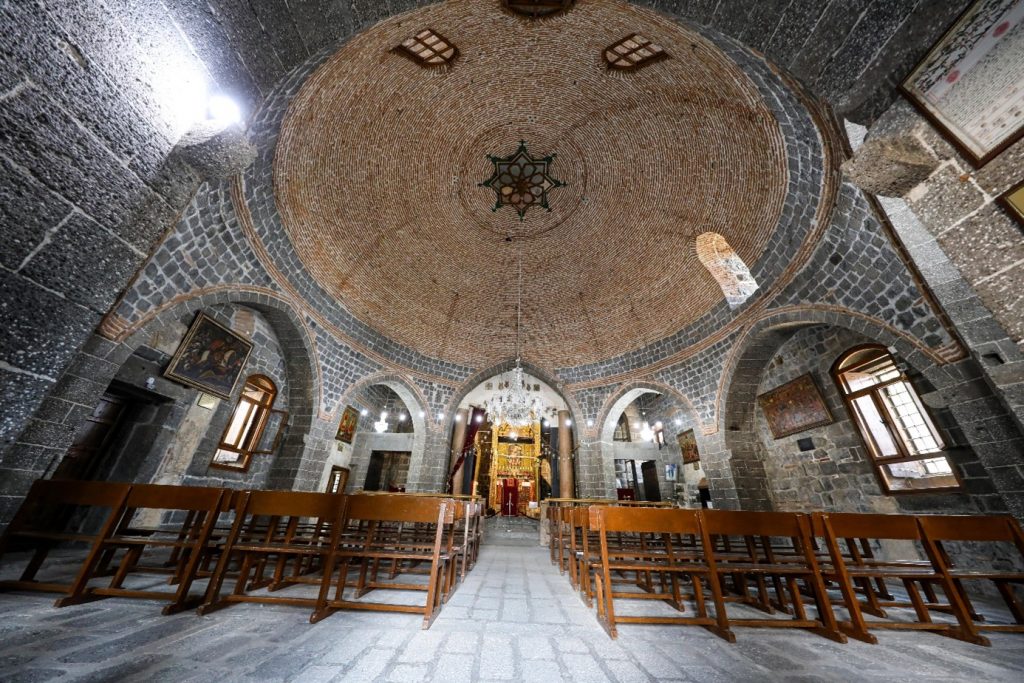
Sülüklü Han
In its time, leeches were extracted from a well inside the caravanserai by doctors of the era for medicinal purposes, leading to the name “Sülüklü Han” (Leech Caravanserai). The caravanserai, commissioned by Hanilioğlu Mahmut Çelebi and his sister Atike Hatun in 1683, now serves as a cafe.
Cahit Sıtkı Tarancı Museum
The house where our renowned poet Cahit Sıtkı Tarancı was born and spent his childhood was built in 1733. Carrying all the features of Diyarbakır’s traditional residential architecture, the house consists of four wings arranged around a central courtyard. It is a ground plus one-story structure, built entirely using basalt stone.
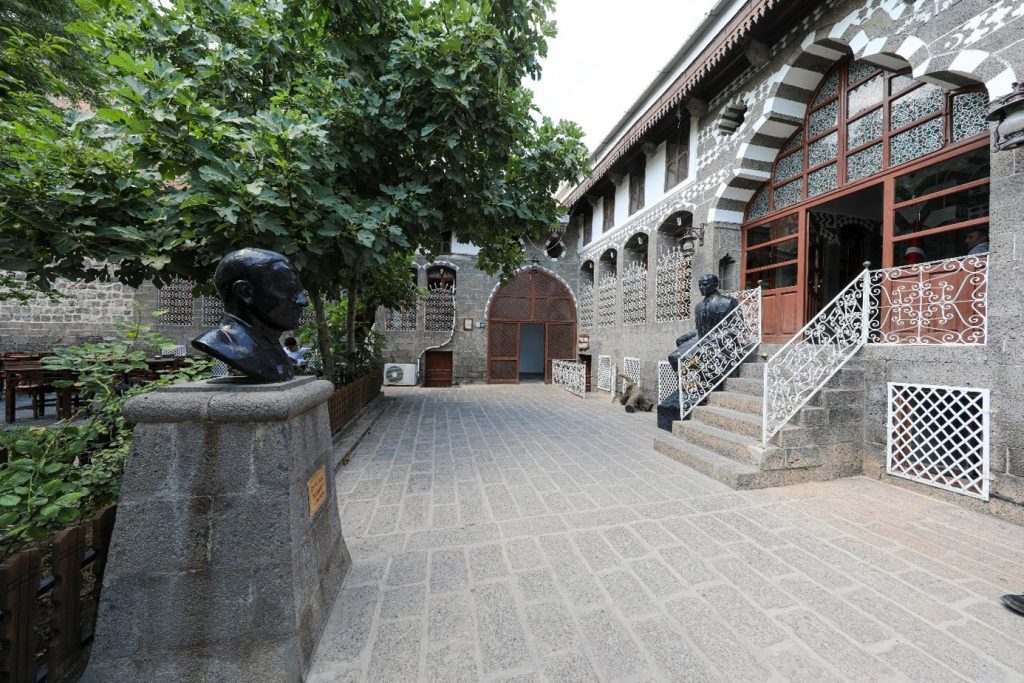
Ahmed Arif Museum House
Located in the historic Sur district, this museum is dedicated to the Diyarbakır-born poet Ahmed Arif and opened its doors in 2011. The poet’s personal belongings, as well as his poems written in his own handwriting, are on display. The museum, with a design featuring six rooms and a courtyard, also houses a library of approximately 2,500 books.
